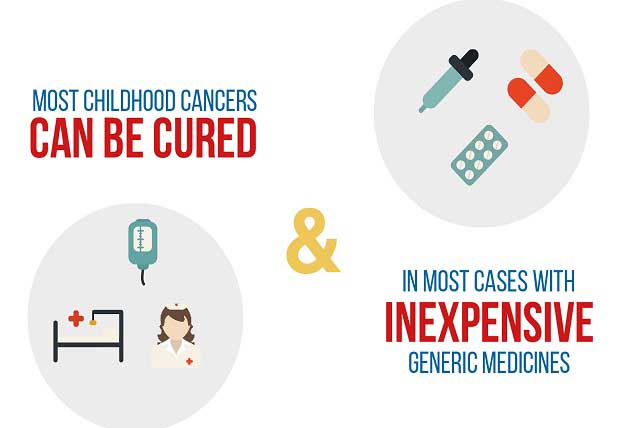WHO has announced a new global initiative for childhood Cancer. The renewed efforts aim at reaching at least a 60% survival rate for children with cancer by 2030.
World Health Organisation (WHO) says this would save an additional one million lives as this new target represents a doubling of the global cure rate for children with cancer.
Cancer is a leading cause of death for children, with 300,000 new cases diagnosed each year among children aged 0-19 years.
The aims of the initiative are two-fold:
- To increase prioritisation of childhood cancer through awareness raising at global and national levels; and
- To expand the capacity of countries to deliver best practice in childhood cancer care.
Concretely, WHO will support governments to –
- Assess current capacities in cancer diagnosis and treatment including the availability of medicines and technologies;
- Set and cost priority cancer diagnosis and treatment programmes; and
- Integrate childhood cancer into national strategies, health benefits packages and social insurance schemes.
Cancer is a leading cause of death for children, with 300,000 new cases diagnosed each year among children aged 0-19 years
Children with cancer in low- and middle-income countries are four times more likely to die of the disease than children in high-income countries.
This is because their illnesses are not diagnosed, they are often forced to abandon treatment due to high costs, and the health professionals entrusted with their care lack specialized training.
Suggested Readings:
Fighting Diseases: Immunotherapy Treatment for Cancer Click Here To Read More
Fighting Diseases: Breast Cancer on rise; What women should do Click Here To Read More
The WHO’s global initiative for childhood cancer, which involves development of a WHO technical package to help scale-up capacities within national health systems, will be achieved with support from a host of partners.
The initiative came on the heels of the third Global High-Level Meeting on Noncommunicable Diseases, which convened dozens of heads of state and ministers from all countries to prompt more urgent action on noncommunicable diseases – among them cancer, diabetes, heart and lung diseases – which kill 41 million people each year.

Cancer is a generic term for a large group of diseases characterised by the growth of abnormal cells beyond their usual boundaries that can then invade adjoining parts of the body and/or spread to other organs. Other common terms used are malignant tumours and neoplasms. Cancer can affect almost any part of the body and has many anatomic and molecular subtypes that each require specific management strategies.



















